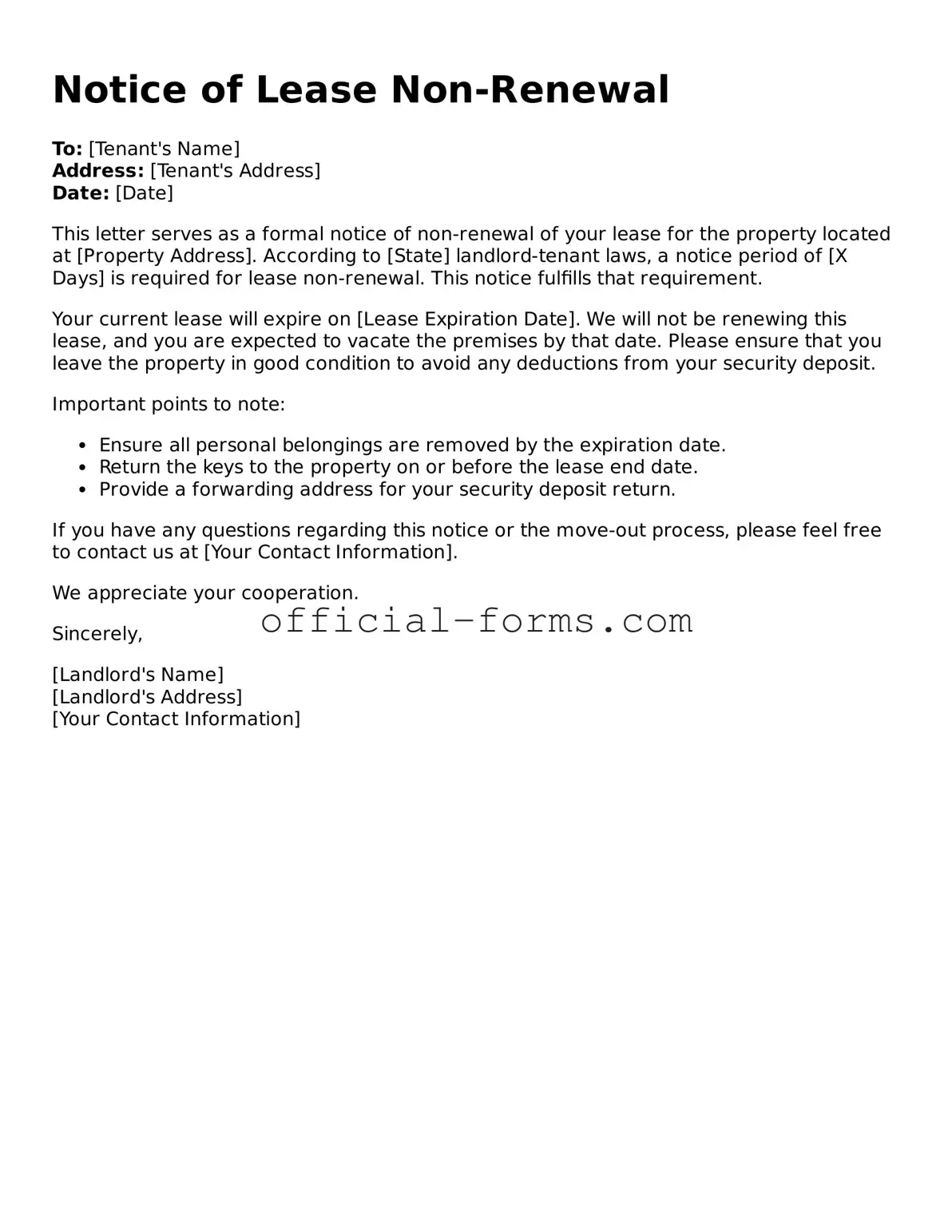Filling out the Notice of Lease Non-Renewal form can seem straightforward, but many individuals make common mistakes that can lead to complications. One frequent error is failing to provide complete information. Landlords and tenants must ensure that all required fields are filled out accurately. Missing details can delay the process or even result in the notice being deemed invalid.
Another mistake involves incorrect dates. It’s crucial to specify the exact date the notice is being issued and the intended end date of the lease. If these dates are not clear, it can create confusion about when the lease will officially terminate. Always double-check the dates before submitting the form.
Some individuals neglect to sign the form. A signature is essential as it indicates agreement and acknowledgment of the notice. Without a signature, the notice may not hold up in a legal context. It’s a simple step that should not be overlooked.
Additionally, people sometimes fail to deliver the notice properly. The method of delivery is important. Whether it’s via certified mail, personal delivery, or another method, it should be documented. This ensures that there is proof the notice was received, which can be critical if disputes arise later.
Another common issue is not keeping a copy of the submitted notice. Retaining a copy for personal records is vital. This serves as evidence that the notice was sent and received, which can be useful in case of any misunderstandings in the future.
Lastly, some individuals misunderstand the notice period requirements. Each lease may have specific terms regarding how much notice must be given before non-renewal. Not adhering to these timelines can lead to complications or even legal repercussions. Always review the lease agreement to ensure compliance with the notice period.
